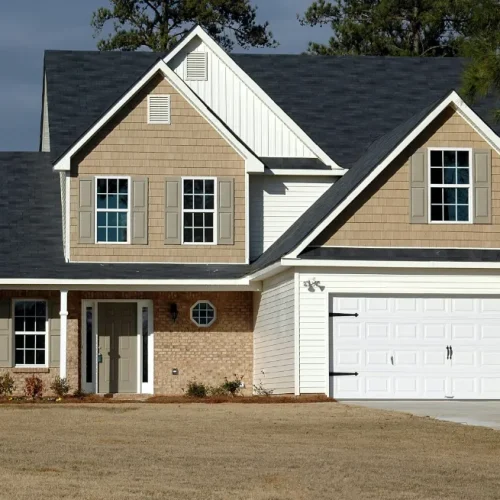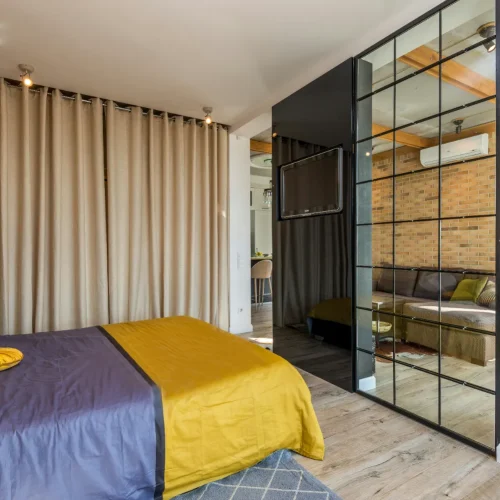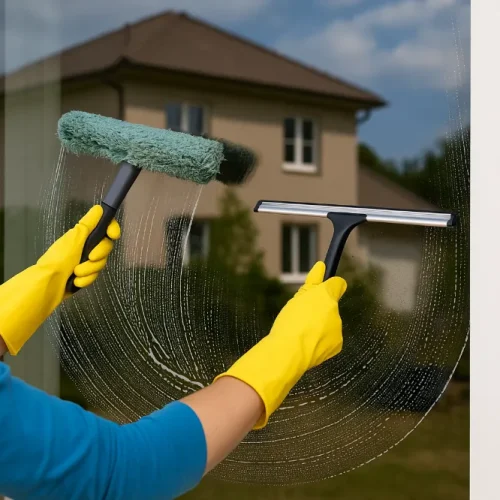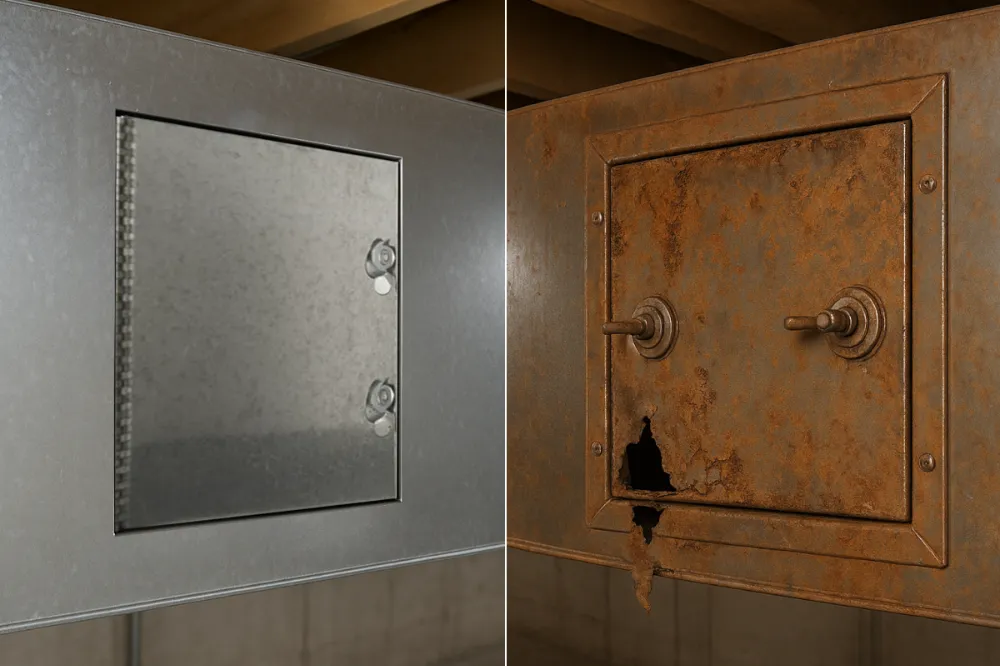
With HVAC systems, bigger equipment, like air handlers, often gets all the attention. Meanwhile, even the smaller details can decide how well they work over time.
Take the duct access door, for instance. When properly sealed, it provides maintenance access to the ductwork and helps promote energy efficiency. However, like any other building component, duct panels wear and tear over time.
So how can HVAC professionals, especially those focused on sustainability, ensure these doors last longer while minimizing environmental impact?
The answer lies in adopting sustainable design practices, from choosing durable materials to following proper installation and maintenance procedures.
What Is a Duct Access Door?
Simply put, a duct access door is a sealed panel installed within HVAC ductwork that lets you access an HVAC duct or air handling unit. It allows you to inspect, clean, and fix parts inside, like coils and filters, without disassembling duct parts.
The duct access door also helps keep the ductwork airtight. If a duct access door doesn’t seal well, air can leak out, making the system work harder to move air. This costs more in energy and wears out the main equipment faster.
Maintaining HVAC duct systems would be far more complicated, costly, and less sustainable without access doors.
Choosing Durable Materials for Duct Access Doors
Choosing the right materials from the start is the secret to long-lasting access doors and panels.
Sturdy Metals
Ducts can be humid, which can cause rust over time. That’s why a duct access door made from galvanized steel, stainless steel, or aluminum is a much better choice for these systems.
Galvanized steel provides excellent durability, even in moisture-prone environments. It performs well in both residential and commercial HVAC systems. Stainless steel is non-porous and corrosion-resistant, ideal for highly hygienic environments like hospitals and food processing plants.
Aluminum is lightweight yet strong and naturally rust-resistant, making it ideal for high-humidity settings. And since it’s lighter, it’s also easier to handle during installation without compromising durability.
Seals and Insulation
Proper sealing and insulation in duct access panels offer thermal and acoustic benefits.
Seals help maintain HVAC systems’ energy efficiency and overall health by preventing air leaks. According to Energy Star, leaky ducts can reduce HVAC efficiency by up to 20%.
An insulated core, on the other hand, helps maintain consistent air temperatures within the ductwork by reducing heat transfer.
The insulation inside the door is important for more than just temperature control. You want insulation that won’t absorb moisture or fall apart for long-term use. Look for insulation materials like mineral wool, rigid foam board, and fiberglass.
Gaskets made from materials like EPDM or neoprene are perfect because they resist cracking and shrinking. A good gasket keeps its shape and seal, even after being opened and closed thousands of times.
As far as acoustic benefits go, insulated panels absorb noise generated by airflow or mechanical vibrations within the ducts. This is especially valuable in commercial settings like offices, hospitals, or schools, where excessive HVAC noise can affect comfort and productivity.
Design Features That Promote Longevity in Duct Doors
Beyond materials, sustainable design practices also make duct doors more durable. These features might seem small, but make a huge difference in the long run.
Stronger Construction
A door with a double-wall, insulated panel is much stronger than a single-panel design. This double wall prevents the door from bending or warping easily.
For bigger doors, extra support inside the panel, often with welded braces, keeps it from sagging, especially when installed on a ceiling.
Better Hinges
The hinge is another part that gets a lot of stress. A continuous piano hinge is a sign of great design. Instead of just a few small hinges, a piano hinge spreads the weight and stress of the door along its entire length, preventing the hinge from failing and keeping it aligned long term.
Reliable Latches
The latch is the final part of the seal. A strong, spring-loaded cam or compression latch ensures the door closes tightly every time. These latches apply even pressure around the door, which helps prevent air leaks. They are also less likely to wear out or break than simpler latches.
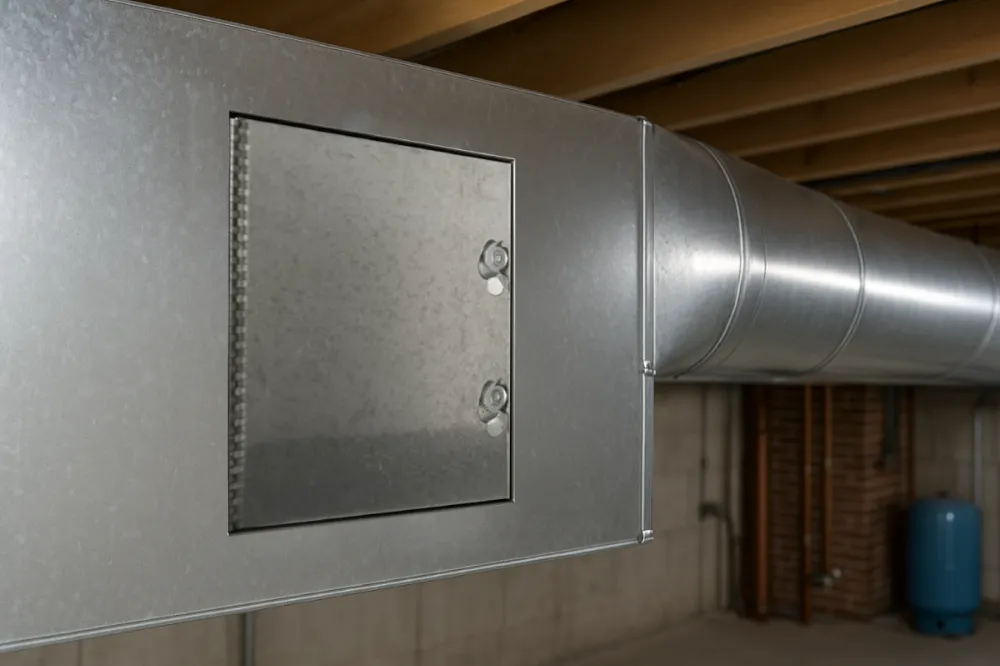
Proper Installation for Enhanced Durability
Even the best-designed door can fail if not installed correctly. Proper installation is key to ensuring a door lasts. Some common best practices include:
- Strategic Placement: Install access doors at strategic points where maintenance is most likely needed, such as near dampers, filters, and coils. Avoid placing doors in locations where accessibility will be compromised.
- Correct Sizing: Ensure the door is large enough for technicians to perform tasks comfortably. Undersized doors may lead to damage from forced entry.
- Secure Fastening: Use appropriate screws, clamps, and latches that maintain a tight seal.
- Airtight Sealing: Apply sealant or gasket material to prevent air loss.
Routine Maintenance to Extend Duct Door Life
Like any mechanical component in the HVAC system, duct access doors need consistent upkeep. Sustainable practices emphasize routine maintenance to prevent premature wear, reduce waste, and maintain efficiency.
- Check hinges, latches, and gaskets for wear.
- Lubricate hinges and locks to prevent rust and ensure smooth operation.
- Replace worn-out gaskets to maintain airtight performance.
- Clean surfaces to remove dust and debris and prevent buildup that can affect door function and system airflow.
- Include duct access doors in scheduled HVAC maintenance. This helps catch smaller issues before they become major, expensive repairs.
Conclusion
Sustainability in HVACs applies to large and small components, including duct access doors. Selecting durable materials with smart design features ensures sustainability from the beginning. Proper installation and routine maintenance all extend the lifespan of these doors.
Longer-lasting access doors reduce replacement frequency, save resources, and improve overall HVAC efficiency. All these practices align with broader sustainability goals and cost-effectiveness in residential and commercial projects.


